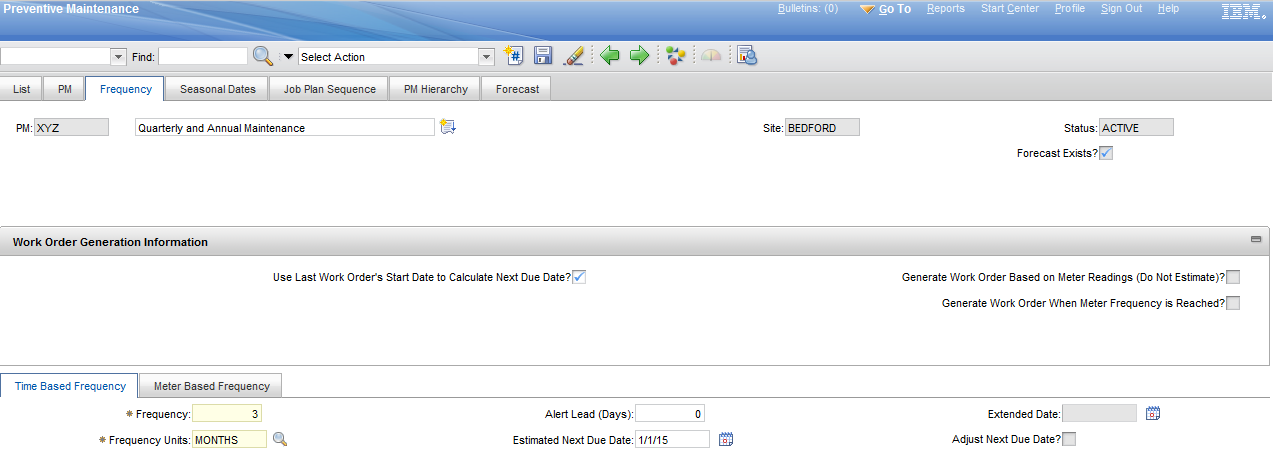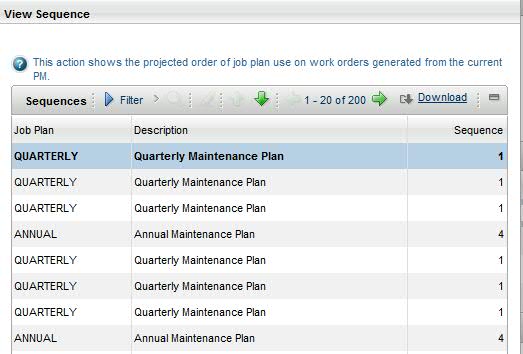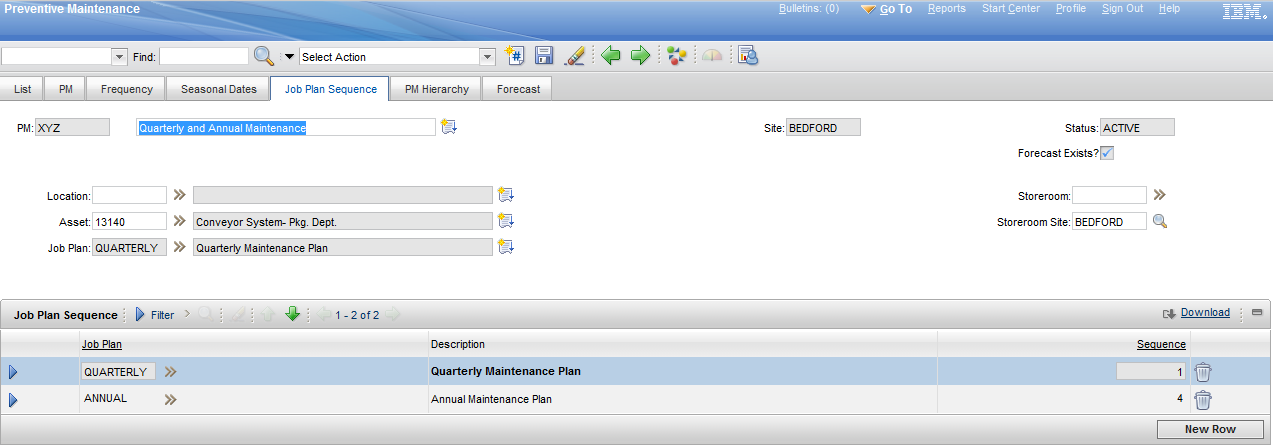Technical Blog Post
Abstract
From the Maximo Support Desk - Use Job Plan Sequences on PM Records to Minimize Administration and Maximize Scheduling and Maintenance Capability
Body
With an incredulous title and claim like that, I'll answer a question first: no, I'm in support, not sales. If you've read some of my other posts, you'll know that I'm just proud to be working with the Maximo product, and that such statements are not made in pursuit of a commission! I guess the support staff are like Maximo's parents, whose job is to take care of, support, and give praise to our little software miracle from the moment it's born to help it live a happy life. I guess it would be timely to also mention here that one other thing that regular readers of my posts know about me is that I can usually come up with equally incredulous metaphors and similes to describe my work with Maximo here at IBM.
So metaphors aside, I'm going to give an intro to another useful feature of Maximo that I see a lot of our customers using with Preventive Maintenance and Job Plans. We happen to have the best and brightest of clients, and I actually first learned about the true value of this feature by observing how one of our customers was using it. Job Plan Sequences...
A common usage of Job Plan sequencing on a Preventive Maintenance record is when the maintenance of an Asset requires quarterly and annual maintenance. In this example, we will assume that there are two different Job Plans; one maintenance routine that must be run once per quarter, and one maintenance routine that must be run once per year.
Define and Identify a Sequence Value
Taking advantage of Job Plan sequencing will provide a concise way to ensure that the correct maintenance gets performed at the required intervals, while minimizing and/or removing the manual administration of the PM and Job Plan records themselves. The summary of the method to create the proper sequence is to assign each Job Plan to a specific position in a sequence of PM Work Order Generation. Let me contextually define what a sequence is. The sequence is based on the frequency of the PM. The PM shown below has a frequency of 3 MONTHS. This means that each 3-month period is 1 sequence. If we wanted to insert a new Job Plan into the sequence every 12 months, this means that we want to insert that Job Plan into every 4th sequence. In other words, sequence 4 is the 4th three-month time period. 
In the Job Plan Sequence section of a PM record, it is not necessary, or typical, to see each number of the PM Work Order generation sequence. It is only necessary to enter the sequential position of the constant, and to enter the sequential position of any variables. For example, if a different Job Plan needs to run on every 4th time that this PM generates Work Orders, then 1 is constant (runs on every frequency of the PM) and 4 is the variable (runs on every 4th frequency of the PM).
To Use a Sequence Value
My example scenario is one whereby quarterly maintenance is required on an asset. Additionally, an annual maintenance procedure needs to be performed on the same asset. The Quarterly Job Plan will run during each PM Work Order Generation, so it's sequence value is 1. The Annual Job Plan will run once every 4th generation of the PM's Work Orders; so it's sequence value is set to 4 to make this happen.
To assist in planning the proper sequence of Job Plans, it may be helpful to think of the PM Work Order Generation process in a more straightforward, linear manner:
-You know that the quarterly PM needs to be run on the first day of each quarter to generate the Work Orders that fulfill this maintenance requirement, and you know that the annual PM needs to be run on the first day of the 4th quarter.
So here's the schedule. The Frequency of this PM is set to 3 MONTHS, with the initial value of the Estimated Next Due Date field set to 1/1/15:
PM Work Orders will generate on 1/1/2015 - Job Plan "QUARTERLY" is used to populate the Work Order tasks
PM Work Orders will generate on 4/1/2015 - Job Plan "QUARTERLY" is used to populate the Work Order tasks
PM Work Orders will generate on 7/1/2015 - Job Plan "QUARTERLY" is used to populate the Work Order tasks
PM Work Orders will generate on 10/1/2015 - Job Plan "ANNUAL" is used to populate the Work Order tasks
The configuration of the PM Sequence rows is shown below, to make the schedule above happen:
You can also view the manual sequence, that shows the names of the Job Plans that will get used for the Work Orders by going to Select Action | View Sequence; this will provide a validation of the schedule that will result from the Job Plan Sequence:
Usage of the Nested Job Plan
The ANNUAL Job Plan can either be a different, or an additional set of tasks:
-If the ANNUAL Job Plan is to be run in addition to the QUARTERLY Job Plan, you can add the QUARTERLY Job Plan onto the ANNUAL Job Plan as a task, using the Nested Job Plan field; the Sequence value in the Job Plan Sequence section of the PM will not be different.
-In this scenario, the ANNUAL Job Plan would have the tasks set up like this:
Verify the Sequence with Forecast
Finally, you can use the PM Forecast feature in Maximo to make sure that the sequence values that you've set up are going to correctly generate the Work Orders as expected. (there are other usages and functionality of the PM Forecast function that are not discussed here)
From the PM record, Select Action | Generate Forecast (you will see other menu options to delete, or to clear an existing forecast if necessary)
Tom Richardson is an IBM Maximo Support Engineer and frequent contributor to the Asset Management Blog community. For a complete index of links to his articles, visit
Index of articles by Tom Richardson, Support Engineer
UID
ibm11111779
